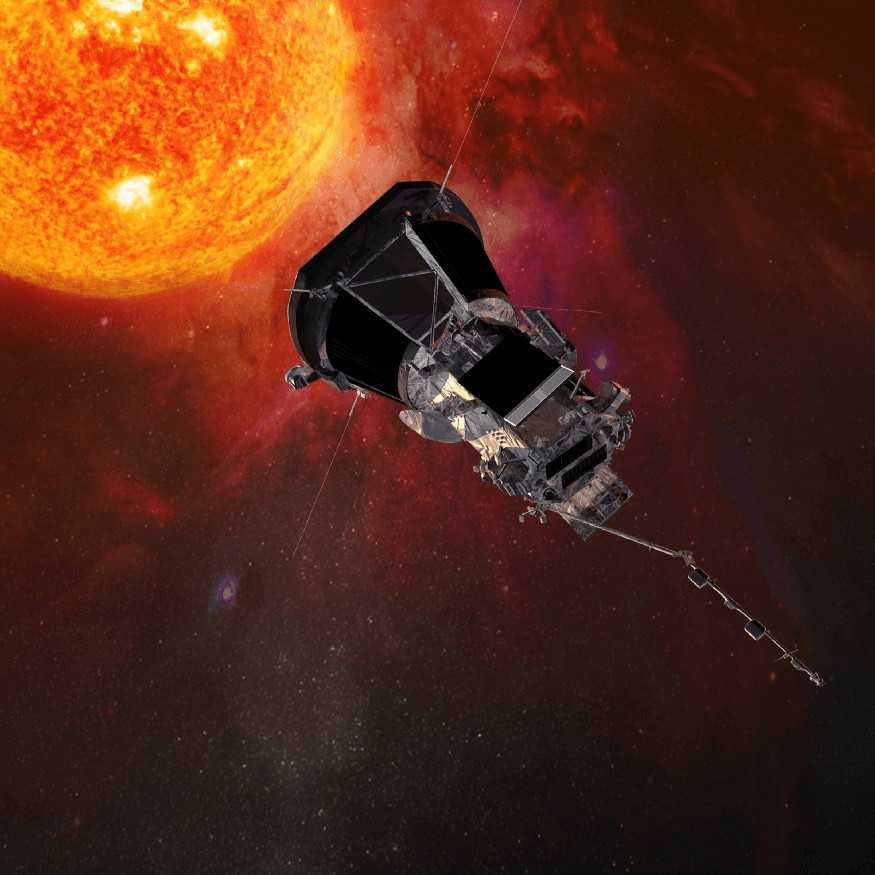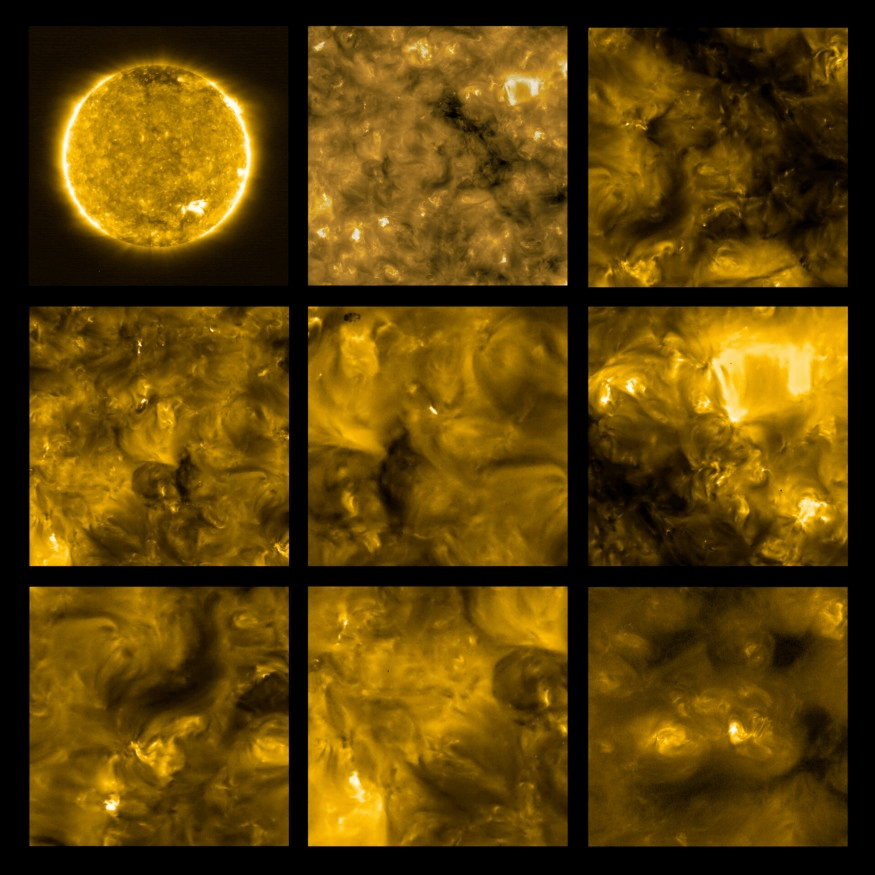今日推荐开源项目:《网易云高仿 desktop-nicemusic》
今日推荐英文原文:《Can We Touch the Sun?》

今日推荐开源项目:《网易云高仿 desktop-nicemusic》传送门:GitHub链接
推荐理由:网抑云梗突然泛滥,但是我们最初的目的只是听歌啊。一款不一样的音乐播放器或许能满足你的要求,其音源和其他资源都是来自网易云(所以没有版权的歌还是放不了)。
今日推荐英文原文:《Can We Touch the Sun?》作者:Alastair Isaacs
原文链接:https://medium.com/illumination/can-we-touch-the-sun-621a59bdee97
推荐理由:宇宙遥远却具有神秘的魅力,引发地表上的人们无数暇想。赋予地球生机的太阳却离我们如此遥远,而我们能接近太阳到什么程度?
Can We Touch the Sun?
If we want to get close to the Sun — and for the sake of this question we do — we’re going to need something that can withstand a lot of heat. There are plenty of known materials, and presumably even more unknown ones, that make good candidates for this. But let’s keep things simple, and go with tungsten.On the face of it, tungsten is unremarkable. Like many metals, it has a silvery appearance. It is pretty rare on Earth — yet useful enough to be found in everyday life, for example, in light bulbs or in electronics. But in one way tungsten stands apart. Of all the elements, tungsten has the highest melting point, staying solid until 6192°F (3422°C).

(Thanks to its high melting point, Tungsten is ideal for use in light bulbs, like this one. Photo by Callum Shaw on Unsplash)So let’s build a spacecraft entirely from tungsten, and ignore all the impracticalities that come with doing that. Our probe will simply be a solid sphere of metal measuring two meters across (roughly six feet, the height of a tall man). We’ll build several of them, and they’ll launch together, before heading into different orbits around the Sun.
Our first probe will settle into a comfortable circular orbit twenty-five million miles from our star. Here, close to the innermost planet Mercury, the Sun starts to heat up the tungsten sphere. Metals are shiny, which helps, as two-thirds of the heat is immediately reflected away. And, as the spacecraft warms up, it starts emitting heat of its own. The hotter it gets, the more heat it radiates away. At some point, if it doesn’t melt first, it will radiate away exactly as much heat as it receives from the Sun. We’ll call this the sphere’s equilibrium temperature, and it represents the greatest temperature the Sun can heat our spacecraft to.
At Mercury, the equilibrium temperature will be 310°F (155°C). The spacecraft would be hot to touch, but nowhere near melting yet. We can definitely get closer.
The second probe does that, this time settling ten million miles from our star. The Sun feels hotter here, but, at a temperature of 760°F (405°C), our tungsten sphere is still not even close to melting. It might not yet be a problem for tungsten, but it is for the expensive electronics that power most satellites. If we wanted to send a probe this close to the Sun, we’d need some sophisticated cooling systems to keep them running.

(An artists impression of the Parker Solar Probe. The spacecraft is protected from the Sun’s heat by a specially designed shield. Image credit to NASA.)The Parker Solar Probe, launched by NASA, will make its closest approach to the Sun on December 24th, 2024. On that day the spacecraft will be just four million miles from the star, the closest any man-made object has ever been. Closest, that is, until our third probe reaches its destination. We’re going to beat the Parker Solar Probe by a fraction, and orbit 3.9 million miles from the Sun.
This probe is going to get scorching hot, reaching 1500°F (815°C). It’s lucky we don’t have any sensors or computers on board, because at this temperature they would fail in seconds. The Parker Solar Probe will face similar temperatures, but it won’t spend stay close to the Sun for long. Its orbit has been designed so that the probe whips around the Sun at high speed (travelling more than 120 miles every second), before heading to more temperate regions close to Venus. This, together with a heat-resistant shield and high-tech cooling systems, help the probe survive such torrid temperatures.
But our tungsten probe is just a metal sphere, and has no expensive electronics to worry about. We can go closer, and we will. But, as we get nearer to the Sun, there’s another issue we need to consider. The Sun itself has a diameter of 860,000 miles, and at four million miles, we’re still pretty far from the surface. But surrounding the Sun, and extending out into space for millions of miles, is the stellar corona, a region of plasma that reaches extreme temperatures.

(The Solar Corona is normally only visible during eclipses. The pink ring around the Moon is the Chromosphere, the outer layer of the Sun.)What makes the corona so hot is still not fully understood. Scientists believe that the intense magnetic fields around the Sun have something to do it. What that is, though, is an area of active research. The Parker Solar Probe, which will pass through the solar corona, hopes to shed some light on this mystery.
The Sun follows an eleven year cycle, during which the strength of the corona rises and falls. During quiet years the extent of the corona is limited, but it returns with a vengeance during active years. Even during quiet years, the Sun occasionally hurls vast quantities of superhot plasma into space. The energy and radiation contained in one of these bursts would almost certainly be fatal for any spacecraft.
We want to get as close to the Sun as possible, so let’s pick a quiet year for our mission. For now we’ll stick with a circular orbit, but we’ll orientate it so that it passes over the poles of the Sun, where the corona is much weaker. We’ll also take advantage of the low density of the stellar corona — even though it is extremely hot, the particles that carry that heat are widely spread out. This means our probe will heat up more slowly that you might expect.
After all this, our spacecraft, at a distance of one million miles from the Sun, heats up to over 3,000°F (1700°C). That’s hot enough to melt lead, but not yet enough to destroy our plucky tungsten sphere. With clever engineering, we could design a heat shield and enough cooling to send a real probe to this distance, even if only for a short time.

(ESA’s Solar Orbiter captured these closeup views of the photosphere and corona, the outer layers of the Sun. Image credit:Solar Orbiter/EUI Team/ESA & NASA; CSL, IAS, MPS, PMOD/WRC, ROB, UCL/MSSL)To go closer, we’ll need to skim the surface of the Sun. Our next probe will fly to just above the photosphere, the outer layer of the star. Getting so close to the Sun creates many problems. Heat is a big, and obvious, one. At this point the high temperatures will prove too much even for tungsten to endure for long. But another is the high amount of radiation coming from the Sun —which will be deadly for any electronics onboard.
But let’s head there anyway, and see what happens. It’s hard to judge exactly how hot our probe will get, but it’s probably in the region of 10,000°F (5,000°C). This is more than enough to melt the sphere, and almost certainly enough to vaporise what’s left. Even if we managed to magically cool our probe to absolute zero before arrival, it would survive no more than fifteen minutes.
It’s a safe bet to say that the limit on how close we can get to the Sun is somewhere around a million miles, at least based on modern technology. It may be that future engineers come up with exotic solutions that allow travel to extreme places, to the very surface or even inside the Sun. But for now, although we may not be able to quite touch the Sun, we can still get pretty close.
下载开源日报APP:https://openingsource.org/2579/
加入我们:https://openingsource.org/about/join/
关注我们:https://openingsource.org/about/love/
